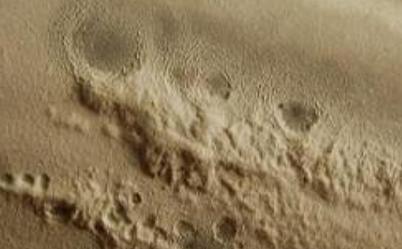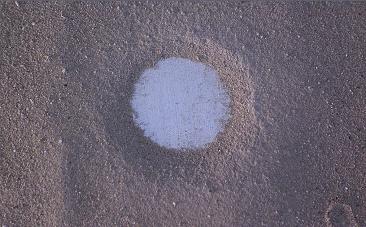Enemy of Empire wrote:dahlenaz wrote:I agree that the overlay is not convincing.
Personally, I would say that it's a pretty far from convincing overlay, but I didn't expect anything better considering the thin layer of apparently loose material you used in your experiment. Unfortunately, unlike yourself, I do not possess or have access to the equipment needed to test my hypothesis on a laboratory scale; so there is nothing I can do to convince you of any part of it.
As I see it, you can either choose - on the basis of one result from a poorly designed experiment - to dismiss my hypothesis completely; or, as a scientist, to take a more investigative approach and see if you can prove/disprove it, on a laboratory scale. I stand by my hypothesis, can you stand by your dismissal? I don't believe there's anything else I can suggest, so I'll leave it with you.
From the
experiments of James St. Pe we have the
following example of experimental-crater formation in thin material and under home-lab power levels...
 Larger image
Larger image
I find his to be far better examples and more "convincing of scalability"
than the craters i offered for examination. That material was very resistive and the discharge
was weak. i was surprised that something was seen. If examples are present at this scale,,
does that help or hurt your proposal?
I would suspect that z-pinch levels of discharge were not reached in James' ionizer experiment
but i may be wrong in that thought. But there may have been something similar occurring
as filaments (tendrils) are drawn together for a focused arc... How they behave as they are
drawn inward may account for another feature seen in craters, the radial scars, suggested as
being caused by a scooping action exerted by a discharge..
You mentioned that before a pinch is formed there are filaments arranged loosely prior
to the surge that compresses the filaments together. (Fig. 1 of you paper).
So doesn't this open the possibility of a process that operates outside of your primary parameter
of a sustained arc?
This
video of hexagonal grouping of filaments in a plasma ball as it
is brought near to an electro-magnetic field shows tendrils maintaining an hexagonal orientation.
The diffused sides of a pinch may be more involved than the pinch itself, in certain instances,
and as a result we have variations in crater characteristics... Or so it seems to this backyard experimenter.
Home experiments are very easy and you sell yourself short by thinking that you need an
elaborate laboratory to test some aspects of your hypothesis. .. d..z
...


